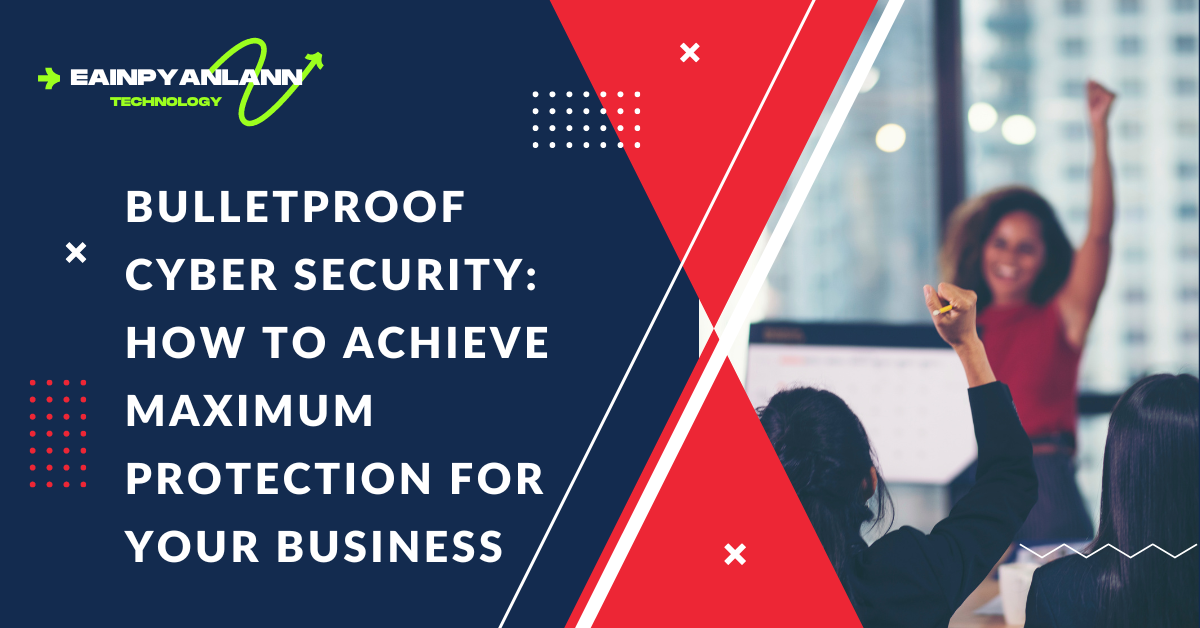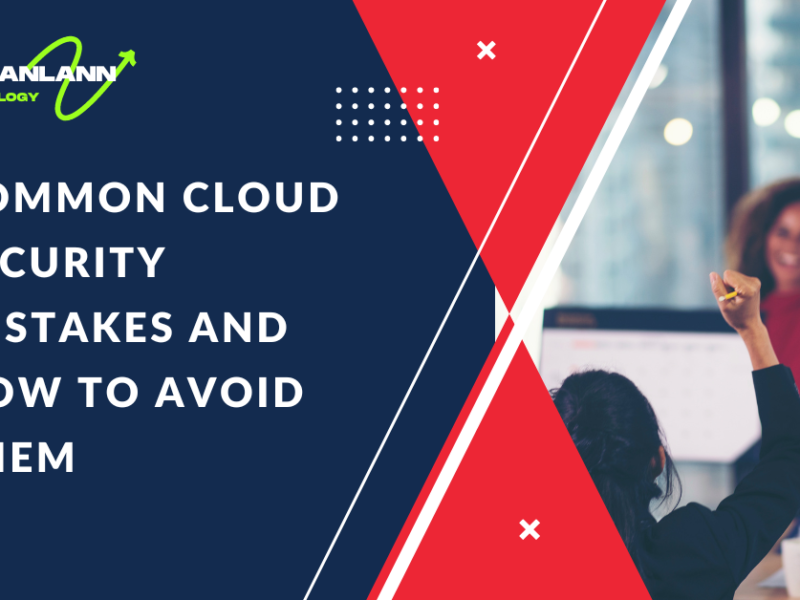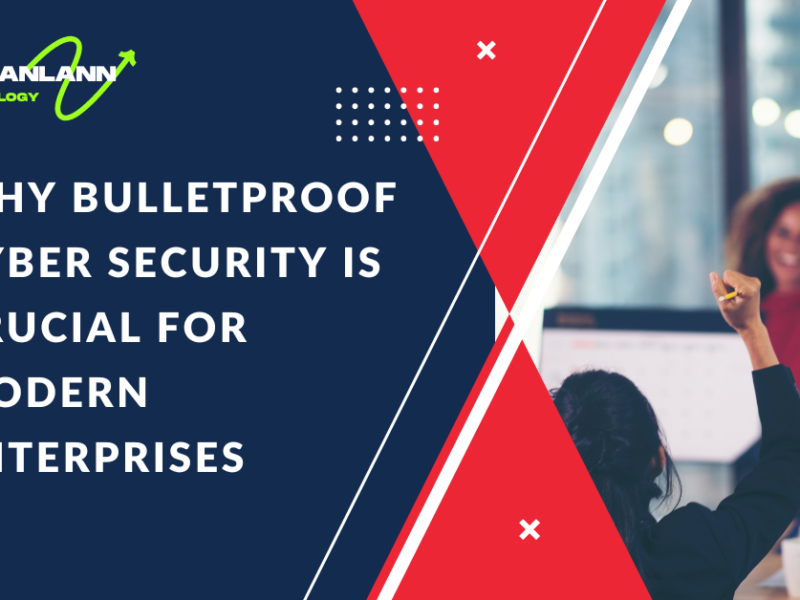In today’s digital landscape, where cyber threats are increasingly sophisticated and pervasive, achieving bulletproof cyber security is essential for safeguarding your business’s critical assets. From data breaches and ransomware to advanced persistent threats (APTs), the risks are diverse and ever-evolving. This guide delves into how businesses can implement bulletproof cyber security strategies to ensure maximum protection and resilience.

1. Understanding Bulletproof Cyber Security
Bulletproof cyber security refers to a comprehensive and multi-layered approach designed to provide maximum protection against a wide range of cyber threats. It involves integrating advanced technologies, best practices, and proactive measures to create a robust security posture. Key components of bulletproof cyber security include:
- Comprehensive Protection: Addressing all potential vulnerabilities across your digital ecosystem.
- Advanced Technologies: Utilizing state-of-the-art tools and systems to detect and prevent threats.
- Proactive Measures: Implementing strategies to anticipate and mitigate potential security risks.
2. Developing a Bulletproof Cyber Security Strategy
To achieve bulletproof cyber security, businesses must adopt a strategic approach that includes several critical elements:
2.1. Conduct a Thorough Risk Assessment
Start by identifying and evaluating the risks specific to your organization:
- Identify Critical Assets: Catalog all essential assets, such as data, hardware, and software, that need protection.
- Evaluate Potential Threats: Assess the types of threats your business might face, including malware, phishing, and insider threats.
- Determine Vulnerabilities: Identify weaknesses in your current security infrastructure that could be exploited by attackers.
2.2. Implement Robust Access Controls
Effective access control measures are fundamental to bulletproof cyber security:
- Multi-Factor Authentication (MFA): Use MFA to add an extra layer of security by requiring more than one form of verification.
- Role-Based Access Control (RBAC): Ensure that users only have access to the resources necessary for their roles.
- Regular Access Reviews: Periodically review and adjust user permissions to maintain strict control over data and systems.
2.3. Invest in Cutting-Edge Security Technologies
Advanced technologies play a crucial role in creating a bulletproof cyber security environment:
- Next-Generation Firewalls: Deploy firewalls that offer advanced threat detection and response capabilities.
- Intrusion Detection Systems (IDS): Implement IDS to monitor network traffic for signs of suspicious activity.
- Endpoint Protection: Utilize comprehensive endpoint protection solutions to safeguard individual devices against malware and other threats.
- Data Encryption: Encrypt sensitive data both in transit and at rest to protect it from unauthorized access.
2.4. Develop a Comprehensive Cyber Security Policy
A well-defined cyber security policy is essential for bulletproof security:
- Policy Scope: Define what the policy covers, including all relevant assets, systems, and data.
- Procedures and Protocols: Outline procedures for incident response, data handling, and access management.
- Employee Responsibilities: Clearly state the roles and responsibilities of employees in maintaining cyber security.
3. Training and Awareness for Bulletproof Cyber Security
Employee awareness and training are critical components of achieving bulletproof cyber security:
3.1. Regular Training Programs
Educate employees about the latest cyber security threats and best practices:
- Phishing Awareness: Train employees to recognize and handle phishing attempts effectively.
- Password Management: Emphasize the importance of creating strong, unique passwords and changing them regularly.
- Safe Internet Use: Teach employees safe browsing habits and caution against downloading unknown attachments.
3.2. Simulated Cyber Attacks
Conduct simulated attacks to test and improve employee responses:
- Phishing Simulations: Send simulated phishing emails to evaluate employees’ ability to detect and report them.
- Incident Response Drills: Run drills to practice and refine your organization’s incident response procedures.
4. Adopting Security Best Practices
Adhering to security best practices enhances your bulletproof cyber security posture:
4.1. Regular Software Updates
Ensure your software and systems are consistently updated to address vulnerabilities:
- Patch Management: Implement a process for applying security patches and updates promptly.
- Automatic Updates: Enable automatic updates where feasible to ensure timely application of security fixes.
4.2. Secure Network Configuration
Proper network configuration is vital for bulletproof security:
- Network Segmentation: Divide your network into segments to limit access and contain potential breaches.
- Secure Wi-Fi: Use strong encryption and secure passwords for wireless networks to prevent unauthorized access.
4.3. Backup and Recovery Solutions
Establish robust backup and recovery processes to protect against data loss:
- Regular Backups: Perform frequent backups of critical data and store them securely.
- Disaster Recovery Plan: Develop and test a disaster recovery plan to ensure rapid recovery in the event of data loss or system failures.
5. Continuous Monitoring and Incident Response
Ongoing monitoring and a well-defined incident response plan are essential for bulletproof cyber security:
5.1. Continuous Monitoring
Implement continuous monitoring to detect and respond to threats in real-time:
- Security Information and Event Management (SIEM): Use SIEM systems to gather and analyze security data from across your network.
- Log Analysis: Regularly review and analyze logs for indicators of suspicious activities or security breaches.
5.2. Incident Response Planning
Develop and maintain a comprehensive incident response plan:
- Incident Response Team: Assemble a team responsible for managing and coordinating responses to cyber incidents.
- Response Procedures: Define clear procedures for identifying, containing, and resolving security incidents, including communication protocols and reporting requirements.
6. Compliance and Regulatory Considerations
Ensure that your cyber security practices comply with relevant regulations and industry standards:
6.1. Regulatory Compliance
Stay compliant with regulations applicable to your industry:
- Data Protection Laws: Adhere to data protection regulations such as GDPR, CCPA, or HIPAA, depending on your location and industry.
- Industry Standards: Follow industry-specific standards, such as PCI DSS for payment card data or NIST guidelines for federal information systems.
6.2. Third-Party Security Management
Assess the security practices of third-party vendors and partners:
- Vendor Assessments: Evaluate the security measures of third-party vendors to ensure they meet your security requirements.
- Contractual Security Obligations: Include security requirements in contracts with third parties to address data protection and compliance.
7. Emerging Trends and Technologies in Cyber Security
Stay ahead of emerging trends and technologies to bolster your bulletproof cyber security strategy:
7.1. Artificial Intelligence and Machine Learning
Leverage AI and machine learning for enhanced threat detection:
- Behavioral Analytics: Use AI to analyze user behavior and identify anomalies that may signal a security threat.
- Automated Threat Response: Implement machine learning models to detect and respond to threats in real-time.
7.2. Zero Trust Architecture
Adopt a Zero Trust Architecture (ZTA) for a more secure environment:
- Least Privilege Access: Implement least privilege access controls to limit the risk of unauthorized access.
- Continuous Verification: Continuously verify user identities and devices to ensure secure access.
8. Evaluating and Enhancing Your Bulletproof Cyber Security
Regular evaluation and improvement of your cyber security practices are vital:
8.1. Security Audits
Conduct regular audits to assess the effectiveness of your security measures:
- Internal Audits: Perform internal audits to review your security practices and identify areas for improvement.
- External Audits: Engage external auditors for an independent evaluation of your bulletproof cyber security posture.
8.2. Continuous Improvement
Adapt and enhance your cyber security practices based on audit findings, industry developments, and emerging threats:
- Feedback and Adaptation: Use feedback from incidents and audits to refine and improve your security measures.
- Ongoing Training: Invest in ongoing training to stay updated with the latest cyber security practices and technologies.
Conclusion
Achieving bulletproof cyber security requires a comprehensive, multi-layered approach that combines advanced technologies, best practices, and continuous vigilance. By developing a robust cyber security strategy, investing in cutting-edge technologies, implementing effective training and awareness programs, and staying informed about emerging trends, businesses can achieve maximum protection for their digital assets. Prioritizing bulletproof cyber security not only safeguards your business from potential threats but also ensures the trust and confidence of your customers and partners. In a world where cyber threats are ever-evolving, a proactive and strategic approach to cyber security is essential for maintaining the integrity and security of your business.




မင်္ဂလာပါ
Thanks
Thanks
Good